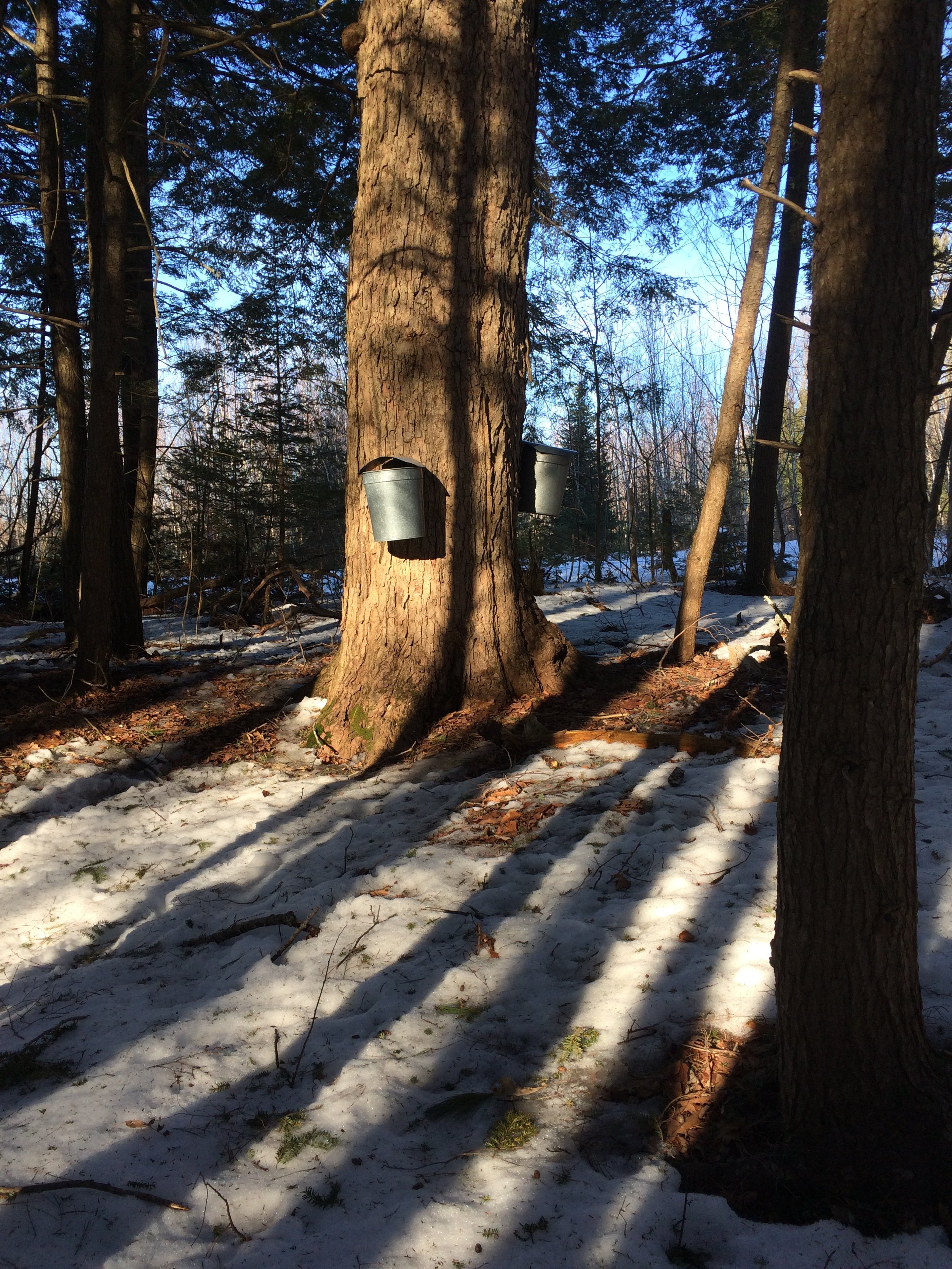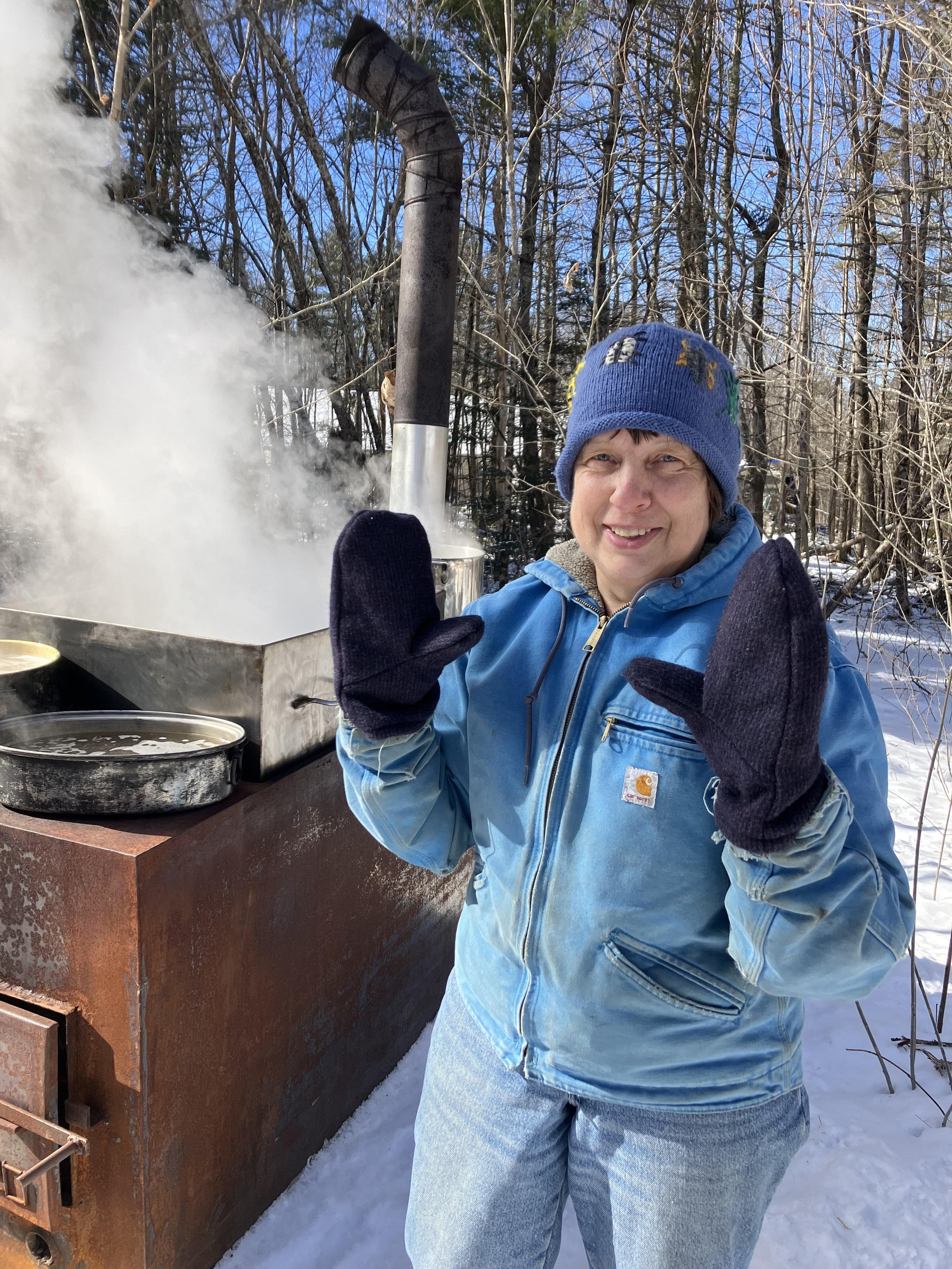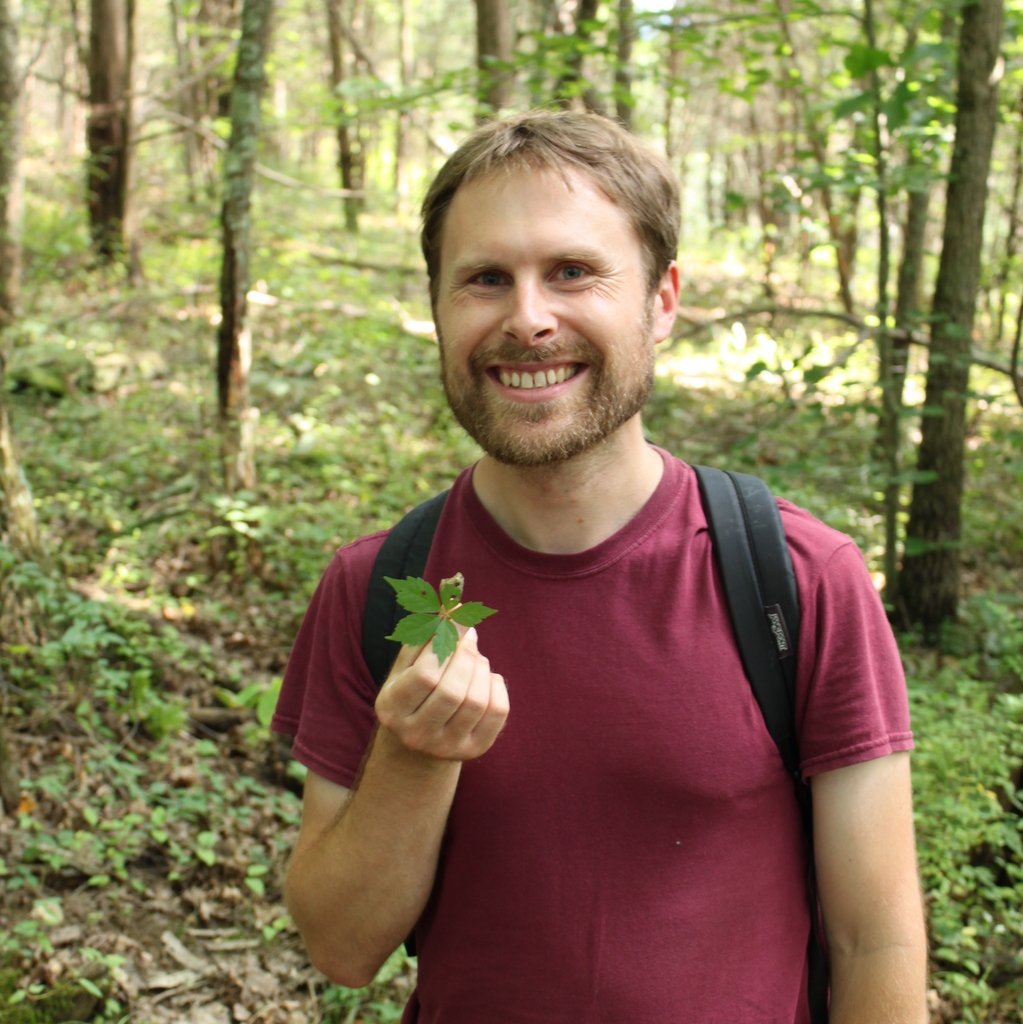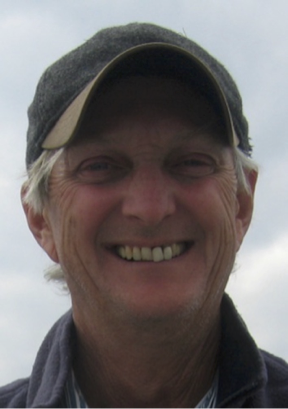
MES Webinar Series: Insect Identification for Novices by Roger Rittmaster
Insect Identification for Novices by Roger Rittmaster
Insects are difficult to identify (no kidding!). Worse still, many insects try to imitate other insects. In this presentation, Roger will focus on key features to help identify insects in fields and backyards, including those that can be confusing. He will review methods to catch and photograph insects and provide an introduction to iNaturalist and bugguide.net, tools that make insect identification much easier.
Roger Rittmaster
Dr. Roger Rittmaster is a retired endocrinologist and an avid nature photographer, focusing on insects. He moved to Maine twelve years ago to pursue his hobbies (nature photography, land conservation, woodworking and tennis). Shortly after moving to Maine, he authored the book, “Butterflies Up Close – a guide to butterfly photography”. Roger is a Maine Master Naturalist, and former MES Vice-President, Chair of the Camden Conservation Commission and Member of the Board of Coastal Mountains Land Trust. He has been an MES member since moving to Maine from North Carolina in 2011.

MES Field Day: Holman Conservation Area, Litchfield, ME
Join MES in Litchfield for a field day at Holman Conservation Area with Kennebec Land Trust on Saturday May 17th 2025. Rain date will be May 18th 2025.
If you plan to come, or have questions, please contact Dana Michaud (djmichaud1@gmail.com or by text at 872-7683). Thank you.
The 75 acre property is a reclaimed gravel pit abutting wetlands with early successional forest, which should make for interesting collecting opportunities.
You are advised to wear protective clothing (long pants tucked into socks, long sleeves, hat and repellent). Be sure to pack water and a lunch or snacks. Bring collecting gear and/or a camera if you plan to collect specimens (we have been granted permission) or photos.
There are no restroom facilities, so plan accordingly.
More information about Holman Conservation Area and descriptions of the trails and habitat can be found on Kennebec Land Trust’s website.
Directions from Gardiner area: Take Rt. 201 south from Gardiner. Just over 3 miles south of the Rt. 295 interchange, turn right onto Thorofare Road. Turn left on the Plains Road. Travel about 0.25 miles and take a left on Upper Pond Road. After ~ 0.5 miles, take a right onto Melanie Lane. A KLT sign and registration box is about 0.2 of a mile from Upper Pond Road.
Directions From Lewiston area: Take Rt. 126 toward Gardiner. Just past Waterman Farm Machinery, turn right onto Rt. 197. At Litchfield Corner (watch for the Brick School on the right), turn left onto the Hallowell Road. Turn right onto the Plains Road, passing the Fairgrounds on the left. Pass over the Turnpike and turn right on the Upper Pond Road; after ~ 0.5 miles turn right on to Melanie Lane.

MES Field Day: Head of Tide Preserve in Belfast
Join MES in Belfast for a field day at Head of Tide Preserve on Saturday August 9th 2025.
We will gather at Head of Tide Preserve at 10:00 a.m. Habitats include the Passagassawakeag River, where aquatic insects can easily be found clinging to rocks at the water’s edge. Trails wind through open fields often teeming with insects in the tall grasses and wildflowers and pine trees of this 92-acre preserve. We have been given permission to collect specimens. We will provide the Coastal Mountains Land Trust (CMLT) with a list of the species found. Be aware that disease-carrying ticks are prevalent in this area. You are advised to wear protective clothing (long pants tucked into socks, long sleeves, hat and repellent). Be sure to pack insect repellent, water, and a lunch or snacks. Bring collecting gear and/or a camera if you plan to collect specimens or photos. There are no restroom facilities, so plan accordingly. For those interested in further exploration, the Stover Preserve directly across Doak Road offers a mile-long trail winding through 53 acres of forested habitat (where volunteers are making progress hand-removing invasive shrubby honeysuckle). For more information and trail maps of Head of Tide and Stover Preserves see https://www.coastalmountains.org/get-outside.
Directions
The entrance to the Preserve is located on Doak Road in Belfast. From the southeast, go north on Route 1 to Belfast and take the Route 137 (Waldo Avenue) exit in Belfast. Turn left on Waldo Avenue, drive 1 mile and turn right on Doak Road. Drive slowly when approaching Doak Road, because it is easy to miss. The Head of Tides Preserve parking lot is about one mile on the right.
If you plan to come, or have questions, please contact Roger Rittmaster (roger.rittmaster@gmail.com or by phone at 919-491-5440). Thank you.

MES Webinar Series: Monarch Conservation by Cyrene Slegona
Monarch Conservation by Cyrene Slegona
This presentation will focus on the past and present status of the North America of Monarchs, research and restoration efforts by Canada, Mexico and the US.
Cyrene Slegona (MS Ed.)
is a lifelong butterfly enthusiast with a focus on Danaus plexippus, Monarch butterflies. As a classroom teacher she introduced her students to entomology (antlions/doodlebugs, dragonflies and Monarchs) and worked with Monarch Watch early on to engage students in the mystery of the journey of Monarchs from Mexico to Maine and the yearly migration in the fall. She continues to share her obsession with Monarchs, on going research and beauty of the species through workshops and community courses.
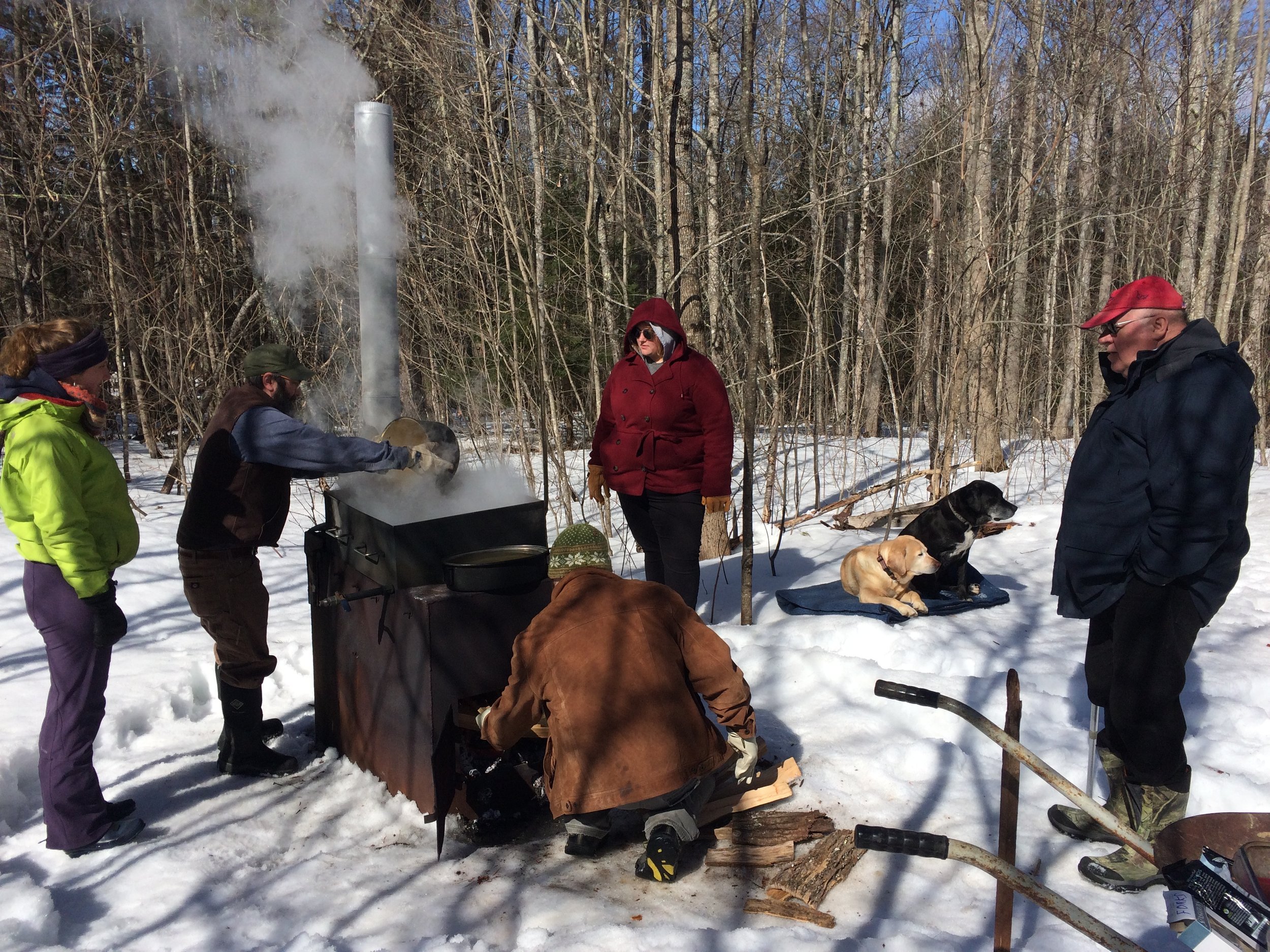
Maple Syruping & Insects
First Field Day of the Season: Maple Syruping & Insects: Saturday, March 22rd!
DO PLEASE contact Charlene Donahue if you're planning to attend:
call 485-0960, or by e-mail at donahuecp15@gmail.com
Saturday, March 22nd: Whitefield (Lincoln County) - Maple Syrup and Insect Collecting at Charlene Donahue’s home. Join us from 10:00 a.m. - 4:00 p.m.
Maple syrup buckets often contain a fascinating assemblage of insects, plus there are insects on tree boles, in the woodpile and tucked in other nooks and crannies this time of year. There is a seep open all winter down near the Sheepscot River at the foot of the slope, and wetlands across the road. Plus, we have a bee yard.
In years past, we've found thousands of springtails atop the snow, and watched stoneflies pop to the surface of the Sheepscot River. You never know what early fauna will show up!
Come visit a backyard sugar operation, enjoy the company and collect a bug or two or maybe more. Each year yields different surprises.
Dress for the weather and be sure to wear boots; bring snowshoes if conditions permit, as well as your lunch and drinks. If the sap cooker is running, there are usually people hanging out, and it's a laid-back time (until a batch of syrup is ready to come off!).
DO PLEASE contact Charlene Donahue if you're planning to attend: call 485-0960, or by e-mail at donahuecp15@gmail.com .
Directions are included in the Weekly Forewing, or ask Charlene. Her home address will not be posted on this public website.

MES Webinar Series: Maine's Avian Aerial Insectivores by Logan Parker
Maine's Avian Aerial Insectivores by Logan Parker
Logan Parker of the Maine Natural History Observatory (MNHO) will present a lecture on nightjar research currently underway in Maine conducted as part of the Maine Nightjar Monitoring Project. This statewide, multifaceted research project is gathering insights on the status of Maine's Eastern Whip-poor-wills and Common Nighthawks, two aerial insectivores undergoing widespread declines. Attendees will learn about the natural history of Maine’s nightjars, cryptic and nocturnal birds that are more likely to be heard than seen, and learn insights from the field about these fascinating birds gathered throughout the state, from the Kennebunk Plains to the North Maine Woods.
Logan Parker
is an ecologist with MNHO and the director of the Maine Nightjar Monitoring Project, a multifaceted research effort started in 2017 focused on Maine's whip-poor-wills and nighthawks. In 2020, he co-founded the Global Nightjar Network to support international collaboration among nightjar researchers and enthusiasts. Previously, he served as the lead technician for Maine's second bird atlas (2018-2022), coordinating many, and participating in each, of the project’s “special species'' and priority habitat surveys including alpine, wetland, and nocturnal bird surveys. Logan resides with his family in Waldo county where he enjoys birding, photography, writing, woodworking, and gardening.

MES Webinar Series: Insect/Fungal interactions: Good and Bad by Seanna Annis
MES Webinar: Insect/Fungal interactions: Good and Bad by Seanna Annis
I will talk about what is a fungus and how fungi interact with a variety of insects. Topics will include leaf cutter ants, woolly aphids, zombie ants, sexy cicadas and more.
Seanna Annis
Seanna Annis is a Professor of Mycology and a member of Cooperative Extension at University of Maine. She has studied fungi for 40years and taught a mycology course for 25 years. She has collaborated with Ellie Groden and other colleagues on fungi that attack Colorado Potato Beetles, Brown Tail Moth larvae and Fire Ants in Maine. She mainly studies fungal pathogens of wild blueberries but loves all fungal pathogens.

Winter Workshop: Mosquitoes of Maine
Join MES for the Mosquito winter workshop! Image: Cs. melanura, male and female, showing the difference in size and presence of ‘bushy’ antennae on the male. MHIR VBDL (2024).

MES Webinar Series: The Dragonfly Mercury Project: From Maine to the national and international stage by Sarah Nelson
The Dragonfly Mercury Project: From Maine to the national and international stage by Sarah Nelson
The Dragonfly Mercury Project (DMP) is a nationwide study that engages citizen scientists and community volunteers in the collection of dragonfly larvae (nymphs) for mercury (Hg) analysis. Mercury is a toxic air pollutant that accumulates in freshwaters across the US and bio-magnifies in foodwebs. The DMP established a surveillance network for Hg in protected lands across the US, using dragonfly larvae as biosentinels. We also developed an integrated impairment index that informs wildlife and human health Hg risk based on dragonfly concentrations. The project has its roots in Maine, where early work led by the University of Maine and Schoodic Institute at Acadia National Park determined that dragonfly larvae were ubiquitous, highlighted variation in Hg across waterbodies, and are straightforward for community and youth participants to identify and collect. The DMP is currently managed by the National Park Service (NPS) and U.S. Geological Survey (USGS), in collaboration with Dartmouth College and the Appalachian Mountain Club. This study is a vehicle for engaging public participants in science, including biodiversity and aquatic macroinvertebrate discovery, as well as awareness for specific issues like mercury pollution. Since 2009, over 6,000 community scientists have contributed data to this study by sampling dragonfly larvae at more than 180 national parks and protected lands across the country.
Sarah Nelson
is the Director of Research at the Appalachian Mountain Club. Prior to AMC, she was at the University of Maine for 21 years, most recently as an Associate Research Professor in the School of Forest Resources and also as Director of the Program in Ecology and Environmental Sciences. Her research focuses on understanding the effects of atmospheric pollution and climate change on forests, foodwebs, and freshwaters in remote and protected ecosystems. Current research includes geochemistry in lakes, climate change with a focus on changing winters, and mercury contamination, using approaches including long-term monitoring, biosentinels, and citizen/community science. Research sites include remote or protected lands, including long-term sites across Maine, mountain ponds in the Northeast, and national parks around the U.S. One of her signature programs is the Dragonfly Mercury Project (DMP), which engages citizen scientists in collection of dragonfly larvae for mercury analysis in national parks, allowing for national-scale assessment of this neurotoxic pollutant.

MES Webinar Series: Sublethal Pesticide Exposure and Its Effects on Insect Behavior and Respiratory Function by Joe Staples
MES Webinar Series: Sublethal Pesticide Exposure and Its Effects on Insect Behavior and Respiratory Function by Joe Staples
In this talk, I summarize ongoing research in the Environmental Entomology and Chemical Ecology Laboratory (EECEL) at USM, examining the subtle yet profound impacts of sublethal pesticide exposure on insects. Even at doses far below lethal levels, pesticides and pollutants can quietly disrupt fundamental activities of insects, including foraging, navigation, communication, and reproduction. Our recent findings raise broader questions about how small disruptions in insect function may ripple through ecosystems, gradually diminishing their capacity to provide essential ecosystem services like pollination and pest control. In considering this, we are once again reminded that these minute yet remarkable organisms wield the greatest influence—not only on the web of life we all share but also on the future we must navigate together.
Joe Staples
Dr. Joseph K. Staples is an Associate Professor in the Department of Environmental Science and Policy at the University of Southern Maine, where his wide-ranging interests in entomology, environmental science, and chemical ecology converge. Growing up in Whitefield, Maine, in the 70s and 80s, Dr. Staples has always been fascinated by the natural world. After a stint in the Army, he studied environmental forest biology and insect chemical ecology at the State University of New York, College of Environmental Science and Forestry (ESF) in Syracuse, before going on to receive a Ph.D. in Biological Sciences from Illinois State University. Today, Dr. Staples' research focuses on how environmental stressors like climate change and pollution impact insect physiology, behavior, and ecology. A self-described tinkerer, he enjoys developing new methods and technologies to monitor and measure the natural world, reflecting his hands-on approach to both teaching and research.
At USM, Dr. Staples and his graduate students investigate the effects of pesticides and habitat changes on insect species. Current projects range from exploring how permethrin exposure influences predator-prey interactions in Culex pipiens larvae to studying oviposition behavior in mosquitoes, and more recently, examining the physiological effects of sublethal doses of imidacloprid on the flesh fly, Sarcophaga bullata.

MES Webinar Series: Eagle Hill Institute: Maine’s Natural History Gem by Roger Rittmaster with Joerg Lotze
Eagle Hill Institute: Maine’s Natural History Gem
(AKA Summer Camp for Adult Nature Nuts) by Roger Rittmaster with Joerg Lotze
Located in Steuben Maine, Eagle Hill is nationally recognized for excellence in teaching natural history. However, many nature enthusiasts in Maine are unaware, or only vaguely familiar, with Eagle Hill’s offerings. In this webinar, Roger Rittmaster will interview Joerg Lotze, the director and founder of Eagle Hill, about the past, present and future of this great institution.
The webinar, co-sponsored by the Maine Entomological Society (MES), Maine Mycological Association and Josselyn Botanical Society, will take place on Thursday, November 14 from 7:00 to 8:00 PM.
Joerg Lotze
Bio coming soon.

MES Annual Meeting
MES Annual Meeting at Bob Nelson’s home in Clinton. Collecting from 10-12, pot luck lunch, business meeting. Coordinator: Bob Nelson.

MES Field Day: Reynolds Forest, Sidney, ME
MES Field Day: Reynolds Forest, Sidney, ME
Join us for a combined MES-Kennebec Land Trust (KLT) field day in Sidney (central Kennebec County) on Saturday, September 7th (rain day on the 8th). Theresa Kerchner will be there for the KLT, and Dana Michaud is leading for the MES.
The actual site is the Reynolds Forest Wildlife Management Area on West River Road (State Route 104).
We'll meet at 10:00 a.m. in the parking area along Route 104. Major habitats include mixed hardwood-softwood forest, old hayfields, and an active cascading stream with waterfalls and a broad floodplain area, Goff Brook. There is an easy hiking trail that includes a loop to the old 18th-century homestead site.
From I-95, take the Lyons Road exit in Sidney, and go east. Since both off-ramps are 180-degree U-turns, if you've come from the north, this will mean turning right at the end of the off-ramp, whereas those coming from the south will turn left. Lyons Road comes to a "T" and ends at West River Road. Turn right and go about 3.3 miles; the parking area is a modest turnout along the highway - please conserve space in parking. This will be about 0.6 miles south of the Sidney boat landing and recreation area, after the road has bent to the right and gone into a low. It's directly across the road from a driveway, immediately after you've crossed Goff Brook. There's a small KLT sign there. A street address of 2740 West River Road should get you there via GPS.
Bring lunch, drinks, your collecting or photography gear, insect and tick repellant, and your enthusiasm! Watch for poison ivy by the parking area; there are no restroom facilities available on-site.
Do let Dana Michaud know (djmichaud1@gmail.com or by phone at 872-7683) if you're planning to come.

MES Field Day: Gregory Sanborn Wildlife Management Area, Fryeburg
MES Field Day: Gregory Sanborn Wildlife Management Area, Fryeburg
We will meet at Clay Pond near the Eastern Slopes Regional Airport in Fryeburg at 10:00 a.m. and explore the pitch pine/scrub oak habitat in the vicinity. This is an unusual habitat for Maine and offers a chance to find less-common species.
Bring collecting and photography gear, including gear for aquatics collecting if you're interested in that, as there is access to Clay Pond itself. Don't forget tick protection! There is no restroom on the premises, but the town of Fryeburg is only a 5-minute drive away.
Directions: I recommend using GPS to find this destination, especially from the north. (Use "Clay Pond Road, Fryeburg Maine" as your search item, NOT the WMA name, which won't bring up any results.) However, if you can't, see below.
For questions, call Gail Everett at 207-955-6420.
* From the south, take Route 25 north to Standish and then 113 to Brownfield. From Brownfield Country Market go 4.2 miles to turn left onto Lyman Drive (the airport road), then 0.4 miles to Clay Pond Road on the left. Follow the MES markers to the small parking area.
* From the north or east, take exit 63 off the Maine Turnpike, then go south on Route 202 to North Windham. Pick up Route 35 to Sebago Lake, then 114 to a left onto Boundary Road to Steep Falls. In Steep Falls pick up 113 and continue to the site as described above.
*From the west, take Route 302 from Conway, NH, to Fryeburg, where it will join with routes 5 and 113. Turn right at this junction and drive 3.9 miles to a right onto Lyman Road, then 0.4 miles to Clay Pond Road.
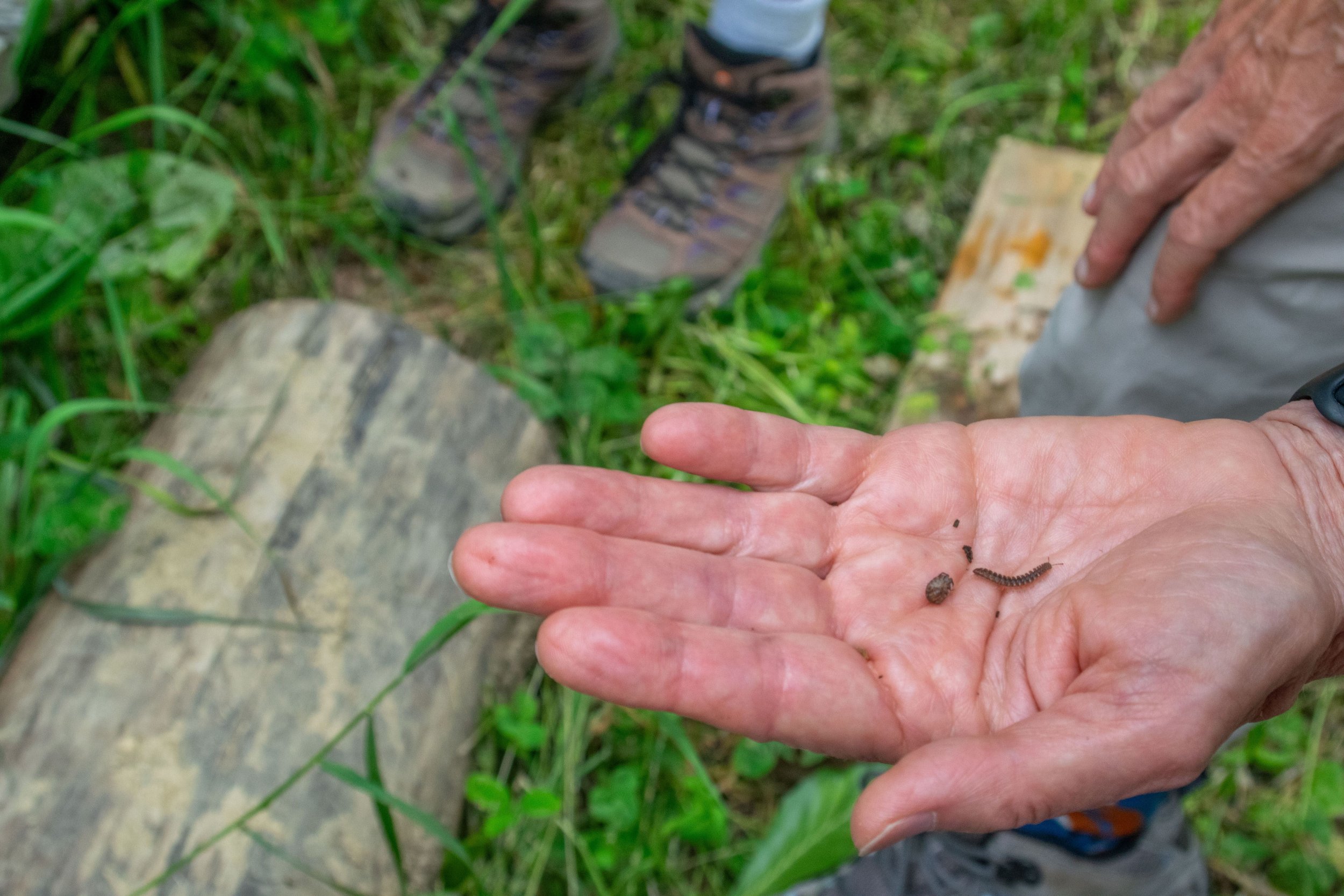
MES Field Day: Camden Snow Bowl
MES Field Day: Camden Snow Bowl
Camden Snow Bowl/Hosmer Pond Field Trip - Camden
Sunday, July 21st, 2024 10:00 a.m. – noon (or longer)
Join us July 21st at 10 a.m. for a foray at the Camden Snow Bowl, jointly sponsored by MES and Coastal Mountains Land Trust. This is a repeat of a field trip that we did last year that was immensely popular, both for MES members and the many members of the public who participated. This property offers a mixture of open mountainside fields, mixed forests, a stream, wet meadows and a lake. During a NABA butterfly count at this location and time about 10 years ago, 22 species were recorded, including the spectacular Bronze Copper and several species of hairstreaks. For those interested, there are trails to the top of Ragged Mountain, at over 1200 feet elevation. Participation by novices is encouraged for this educational event.
We will gather at 10:00 a.m. in the parking lot of the Snow Bowl. Be aware that disease-carrying ticks are prevalent in this area. You are advised to wear protective clothing (long pants tucked into socks, long sleeves, hat and repellent). Be sure to pack water and a lunch or snacks. Bring collecting gear and/or a camera if you plan to collect specimens or photos. Close-focusing binoculars will be helpful, as well as rubber boots if you wish to explore the wet meadows with Bob Nelson.
Contact Roger Rittmaster (roger.rittmaster@gmail.com) to confirm your participation and for notification of any last-minute changes.

June Mothing Night!
June Mothing Night!
Watch this space for more details TBA.
A black-light mothing night had been planned in southern coastal Maine for late June, but precise details have not yet been worked out. Necessary permissions have only recently been released. Watch this space and your e-mail account for an announcement in The Weekly Forewing about when and precisely where this event will be scheduled.

MES Field Day: Maine Forest & Logging Museum, Bradley
MES Field Day: Maine Forest & Logging Museum, Bradley
Join us at the Visitors Center of the Maine Forest and Logging Museum in Bradley at 10:00 a.m. on June 1st, at an actual working museum demonstrating forest practices over history. There are opportunities to wade in for water bugs as well as walk in the woods, and explore a babbling brook as well. Lots of edge and shore habitats!
Bring your camera or collecting gear, insect/tick repellant, lunch (and snacks, if wanted) and drinks, and dress for whatever Mother Nature delivers for the weather. Hiking boots are probably appropriate for going into the forest, and waterproof boots if you want to explore the wetlands. There are both picnic tables and outhouses on the grounds.
Contact Victoria Hansen (vhansen@myfairpoint.net) with any questions.
Directions: The Maine Forest and Logging Museum is located at 262 Government Road, off Maine State Route 178 in Bradley, halfway between Milford and Brewer.
From the south, take I-95 north to Exit 182A, which will put you on I-395. Get off at Exit 4 onto State Route 15, and turn right to go toward Bangor/Brewer/Route 9. Take Route 9 from Brewer 4 miles towards Eddington. Turn left onto Route 178 and follow it towards Milford (north) for another 4.5 miles. A large, brown Maine Forest and Logging Museum sign will be on the left, but the entrance and Government Road will be on the right directly across from the sign.
From the north, take I-95 south to Exit 197 and turn left onto Route 43. Follow Route 43 to the intersection with Route 2 in downtown Old Town. Turn left onto Route to Milford, cross the river and then turn right onto State Route 178. Travel south 4.8 miles to Government Road on the left (directly across from the large, brown sign for Maine Forest and Logging Museum on the right). Follow Government Road for about a mile, bearing right at the fork in the road.
Please park in the visitor parking lot.
Our website is: https://www.maineforestandloggingmuseum.org
Map of the grounds: https://www.maineforestandloggingmuseum.org/map

MES Webinar Series: Light Pollution as a Driver of Insect Declines by Avalon Owens
Light Pollution as a Driver of Insect Declines by Avalon Owens
Insect populations around the world appear to be declining rapidly. But why? While habitat loss, pesticide use, and climate change all have something to do with it, I assert in this talk that light pollution is another often overlooked bringer of the insect apocalypse. Light pollution interferes with the development, dispersal, foraging, and reproduction of diverse insect taxa, including nocturnal pollinators and charismatic flagship species such as fireflies. Unlike other anthropogenic threats, light pollution can be cheaply, easily, and instantly eliminated — yet recent innovations in lighting technology have only made the problem worse. I conclude by highlighting a few simple things we can all do to help protect the night sky, fireflies, and the foundations of ecosystems worldwide.
Cover image Credit Billy Hickey. See more of his work here: https://billyhickeyphoto.com/
Dr. Avalon C.S. Owens
received her Ph.D. in Biology from Tufts University in spring 2022, where she studied the impact of artificial light on bioluminescent fireflies. She also holds a B.A. in Integrative Biology from Harvard University and an M.S. in Entomology from National Taiwan University.

Pinning Workshop/Work Day at the Maine State Museum Collection
Pinning Workshop/Work Day at the Maine State Museum Collection
Monday, April 15, 2024; 10 a.m. - 4 p.m.
MSM Annex, 10 Water St. Hallowell, Maine
DO PLEASE contact Charlene Donahue if you're planning to attend:
call 485-0960, or by e-mail at donahuecp15@gmail.com
Learn how to properly pin and label insect specimens for identification and future study. The Maine State Museum (MSM) has tens of thousands of specimens that need pinning and labelling so that they become valuable bits of the scientific world rather than dead bugs in a jar. Or bring your own material to work on.
If pinning is not your jam, the MSM collection always needs curating. The collection needs sorting out at all levels - from samples that have not been sorted even to order to identified specimens that need to be incorporated into the collection. Lots of labelling - proper labels need to be added to specimens and drawers and cabinets labelled so we can find things. There are specimens that need identifying to any level. There is sure to be a job for you and others to work with on a project that never ends. AND we provide on the job training!
Come for whatever your schedule allows that day. There is no food or drink allowed in the annex so plan on heading out to a nearby restaurant for lunch. Wear warm clothes as the Annex is cool and dry (to reduce insect and fungal infestations in the collections).
Please let Charlene Donahue know (via e-mail: donahuecp15@gmail.com or 485-0960 if you plan on attending.
Directions: The MSM Annex is in the back part of the Maine Lottery building.
From the North: Take exit 109A from I-95 S heading toward Augusta on Western Avenue. After 0.5 mile, at the light by the Fire Station (before Burger King), turn right onto Armory Street. Merge left onto Capitol Street. In 0.8 mi turn right onto State Street. In another 0.8 mi. turn left into the parking lot of the temporary home of the Maine State Museum staff and warehouse. (If you pass the cemetery, you have gone too far.)
From the South: Go through Hallowell on Route 201. Pass the Hallowell Cemetery, which will be on your right. Take the next driveway into the first parking lot on the right. (If you pass the old Dairy Queen, you have gone too far.)
Enter the building by the wooden steps next to the tractor trailer, where the sign says “ENTRANCE.” The outer door will be locked so call Charlene when you get there and we will come open it.
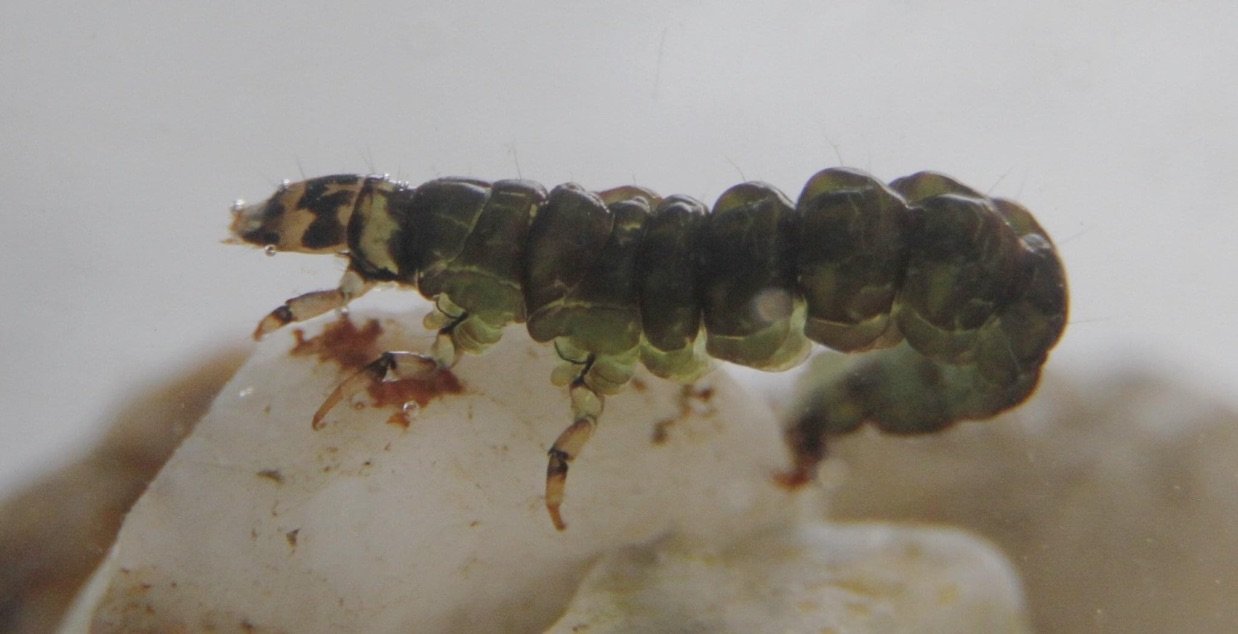
MES Webinar Series: Aquatic Insects, Lifestyle, Behavior and Fly Tying by Eric Frohmberg
Aquatic Insects, Lifestyle, Behavior and Fly Tying by Eric Frohmberg
In this presentation I will talk about mayflies, caddisflies, stoneflies and a few other aquatic insects and crustaceans that are fed upon by trout and salmon. I will talk about behavior and lifestyle and how those behaviors are imitated by anglers. Lastly, I'll review the history of fly tying and how anglers have imitated the shape, behavior and lifestyle of aquatic insects using natural and synthetic materials, and how that has turned into an art form of its own.
Eric Frohmberg
has been an amateur entomologist... well, he's one of those kids who never grew out of it. He has hosted a geeky podcast on aquatic entomology as it relates to fly fishing called Angler's Entomology Podcast. His professional life has focused on Public Health, working on exposures to Native Americans from above ground nuclear testing, closing of the Maine Yankee Nuclear Power Plant, fish consumption advisories within the state, and housing safety around lead and asthma triggers. He now is the Director of the Chronic Disease Programs at the Maine CDC. He and mostly his lovely wife, Selene, also own a fly shop in Gardiner, ME, called Selene's Fly Shop, where they offer classes on fly fishing, fly tying and aquatic entomology.
Photo: Eric Frohmberg (right) and Selene of Maine (left) sorting bees for the Maine Bumble Bee Atlas up on the Allagash.

**CANCELLED** Maple Syruping & Insects
First Field Day of the Season: Maple Syruping & Insects: Saturday, March 23rd!
**CANCELLED DUE TO WEATHER**
DO PLEASE contact Charlene Donahue if you're planning to attend:
call 485-0960, or by e-mail at donahuecp15@gmail.com
Saturday, March 25: Whitefield (Lincoln County) - Maple Syrup and Insect Collecting at Charlene Donahue’s home. Join us from 10:00 a.m. - 4:00 p.m.
Maple syrup buckets often contain a fascinating assemblage of insects, plus there are insects on tree boles, in the woodpile and tucked in other nooks and crannies this time of year. There is a seep open all winter down near the Sheepscot River at the foot of the slope, and wetlands across the road. Plus, we have a bee yard.
In years past, we've found thousands of springtails atop the snow, and watched stoneflies pop to the surface of the Sheepscot River. You never know what early fauna will show up!
Come visit a backyard sugar operation, enjoy the company and collect a bug or two or maybe more. Each year yields different surprises.
Dress for the weather and be sure to wear boots; bring snowshoes if conditions permit, as well as your lunch and drinks. If the sap cooker is running, there are usually people hanging out, and it's a laid-back time (until a batch of syrup is ready to come off!).
DO PLEASE contact Charlene Donahue if you're planning to attend: call 485-0960, or by e-mail at donahuecp15@gmail.com .
Directions are included in the Weekly Forewing, or ask Charlene. Her home address will not be posted on this public website.

MES Webinar Series: Live Free and Pollinate: An Investigation of Native Bees Across New Hampshire Apple Orchards by Shyloh Favreau
Live Free and Pollinate: An Investigation of Native Bees Across New Hampshire Apple Orchards by Shyloh Favreau
As of 2017, New Hampshire’s apple orchards spanned 1,458 acres, hosting a rich assortment of over 50 apple varieties, and ranked as the fifth most cultivated crop by acreage in the state. Since 2006, beekeepers lose an average of 30% of their bees annually, increasing the cost of honeybee rentals for farmers. Consequently, due to these rising costs, there has been a significant shift in focus towards utilizing native bees for their pollination services. This study endeavors to establish a comprehensive statewide census of native bee species within apple orchards during bloom, and investigate whether orchard management practices, surrounding landscapes, and climate serve as predictors for native bee communities across the state. This project involved sampling twenty-two orchards over a span of 17 days in May 2023, ensuring representation from at least two orchards in each of New Hampshire's ten counties.
Shyloh Favreau
serves as the Program Manager for the Food & Agriculture Team at the University of New Hampshire Cooperative Extension. In this capacity, he oversees the university's soil testing and insect identification service, providing crucial statewide program support for commercial growers. Recently, he has assumed responsibility for the university's tick education program.
Simultaneously, Shyloh is pursuing his master's degree in UNH's Agroecology Lab and the UNH Collection of Insects and Other Arthropods, specializing in melittology—the study of wild bees. His specific focus lies on Andrena, a substantial genus of ground-nesting mining bees. This passion for bees originated during his undergraduate years at Marlboro College, VT, where he dedicated his senior thesis to exploring bee communities and habitat fragmentation.
Shyloh's research seamlessly integrates his fascination with bee taxonomy and morphology with an appreciation for bees' pivotal role in agriculture. His goal is to complete his master's degree by the end of 2024, with aspirations to further his bee-related work through a Ph.D. program.

Winter Workshop: Micro Hymenoptera
Join MES for the Micro Hymenoptera winter workshop! Image: Gryonoides garciai Masner & Mikó.
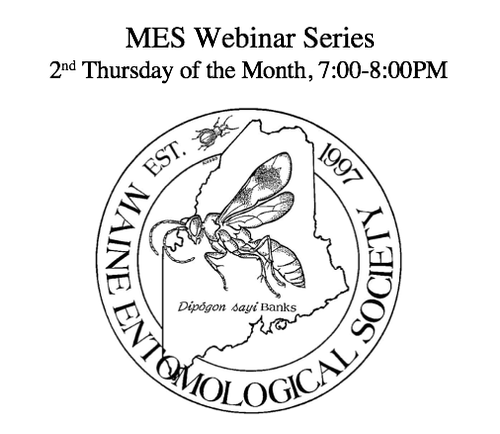
MES Webinar Series: Browntail Moth Winter Webs - Their Winter Fortress or Achilles Heel? by Ellie Groden
Browntail Moth Winter Webs - Their Winter Fortress or Achilles Heel? by Ellie Groden
***Please Note: This is webinar is on the FIRST Thursday, due to a scheduling conflict.***
I will talk about collaborative studies with UMaine colleagues and students investigating the structure of browntail moths' silk overwintering webs and our experiments aimed at targeting overwintered larvae in their webs.
Ellie Groden
is currently Professor Emerita at UMaine, having worked as a Professor of Entomology for over 30+ years before retiring in the fall of 2019.

MES Webinar Series: Backyard Leafminers by Charley Eiseman
Backyard Leafminers by Charley Eiseman
***Please Note: This is a TUESDAY webinar, due to a scheduling conflict.***
Leafminers are insect larvae that spend at least part of their lives feeding between the epidermal layers of leaves. In North America they include over 2000 species of moths, flies, beetles, and sawflies, belonging to over 50 different families. These insects are typically quite host-specific, and the form of the mine varies considerably depending on what insect produces it. As a result, it is often possible to identify the responsible insect using only the host plant and mine characteristics. After a decade of reviewing the relevant literature, traveling throughout the continent, and collecting and rearing thousands of leafminers, Charley has completed a guide to the North American species that includes keys to the mines found on each plant genus. This slideshow presentation will introduce the major groups of leafminers, drawing all of the examples from among the 200+ species he found in his yard in 2020.
Charley Eiseman
Charley Eiseman is a freelance naturalist based in western Massachusetts. He has been conducting plant and wildlife surveys and natural resource inventories throughout New England for over 20 years, as well as teaching courses and workshops on interpreting animal tracks and sign (both vertebrate and invertebrate). He holds an MS in Botany (Field Naturalist) from the University of Vermont and a BS in Wildlife and Fisheries Conservation and Management from the University of Massachusetts. Charley is the author of Tracks & Sign of Insects and Other Invertebrates (Stackpole Books, 2010), Leafminers of North America (self-published e-book, 2019; second edition, 2022), and an insect-themed blog called “BugTracks.” He has also published over 60 scientific papers on insect natural history, including the description of over 75 new species. http://charleyeiseman.com/

MES Webinar Series: Are Insects Declining in Maine? by Frank Drummond
Are Insects Declining in Maine? by Frank Drummond
Insect decline is of great concern as they are fundamental in ecosystem function and health. As an introduction this webinar reviews some of the important studies conducted to provide evidence of insect decline across the globe. Insect decline is not an easy phenomenon to prove, it is fraught with difficulties. Some of these difficulties will be described before describing what appears to be the case with insect decline in Maine. Between 2021 and 2022 the speaker received several historical datasets (17) of insects sampled across Maine. A subset of these datasets were assessed for evidence of insect decline. The statistical methods used to investigate the trend of insect community species richness, total abundance, and individual species occurrences over time are discussed. Overall, evidence of arthropod decline was found in Maine across several taxa ranging from moths and butterflies (Lepidoptera) and dragonflies (Odonata) to flower flies (Syrphidae in the order Diptera) and bees and ants in the order Hymenoptera. The taxa showing the least decline were cursorial spiders (class Arachnida) and aquatic benthic macro-invertebrates (several classes of arthropods and annelids). However, the decline in Maine does not appear to be as massive as that recorded by other researchers in Europe, Latin America, and other parts of the U.S.
Frank Drummond
is professor emeritus of entomology and wild blueberry extension at the University of Maine. His training is in botany (B.S.), entomology (M.S.), and biology (PhD). At the age of 8 he began collecting insects and learning their taxonomy at a nearby nature preserve in Rhode Island. At age 12 he began keeping honey bees. As a graduate student and later as an entomolgy technician, he ran a part-time commercial beekeeping business with his partner, Ellie Groden. He has many interests and for the last 30 years he and his graduate students have worked in wild blueberry (Vaccinium angustifolium) researching least toxic approaches to insect pest management, including biological control; but he has also studied pollination ecology, and the biology, behavior, and conservation of native bees; biotic and abiotic stressors of honey bees; lowbush blueberry plant genetics; reproductive biology and cold tolerance of lowbush blueberry; and food safety microbiology in lowbush blueberry. Most of the time, he would just as soon spend a spring and summer day in a wild blueberry field watching bees than go to the beach...although camping and fishing have no equal. He is the 2018 University of Maine Distinguished Professor, having taught 29 different classes while at the University of Maine (including bee biology, honeybee management, mathematical and computer modeling, and statistics and quantitative ecology), secured $26,759,611 in research funding over his career (with several other colleagues), and has published 341 scientific articles.

MES Webinar Series: Dancing in the Dark: Identification of Platygastrid Parasitoids for Use Against the Blueberry Gall Midge Complex by Monique Raymond
Dancing in the Dark: Identification of Platygastrid Parasitoids for Use Against the Blueberry Gall Midge Complex by Monique Raymond
In taxonomy "dark taxa" are hyperdiverse clades which have relatively low rates of formal description. In our efforts to identify biocontrol agents of pests, this "dark" status stands in the way of finding biocontrol candidates, or understanding pests themselves. Our exploration of platygastrid (Hymenoptera: Platygastroidea) parasitoids of the Blueberry Gall Midge Complex (Diptera: Cecidomyiidae) has uncovered heightened levels of complexity in blueberry systems in Maine and New Hampshire, producing many lessons (and many more questions!) along the way.
Monique Raymond
Monique Raymond currently serves as a research technician at the University of New Hampshire Collection of Insects and Other Arthropods, where she will soon be defending her master's thesis. Her passion for entomology traces back to her early years, with memories of keeping caterpillars in her preschool cubby. This affinity persisted fueled by years of outdoor education and biological coursework. Monique's entomological journey gained valuable experience during her tenure as a collections technician at the Bishop Museum in Honolulu and as an assistant curator at the UNH Collection upon returning home. Her research focuses on the convergence of integrated pest management and taxonomy, with a specific interest in micromorphology, insect rearing, and integrative research methods. Looking ahead, Monique aspires to pursue a Ph.D. in entomology to further advance her career in this field.

MES Annual Meeting
MES Annual Meeting at Bob Nelson’s home in Clinton. Collecting from 10-12, pot luck lunch, business meeting. Coordinator: Bob Nelson.

Field Day - Good Will-Hinckley Campus in Fairfield
Our last field day of the season is scheduled for 10:00 a.m. on September 9th at the Good Will - Hinckley campus of Kennebec Valley Community College in Fairfield (Somerset County). We'll meet behind the Maine Academy of Natural Sciences administration building. Turn onto Easler Road from U.S. Route 201, between this building and the L. C. Bates Museum; coordinates for the turn are 44.6626, -69.6259. This is opposite a big new solar array on the east side of Route 201. Go up the hill between the buildings, and turn left into the parking lot towards the greenhouses.
Habitats include a small pond, fields, and forest pockets. Access to more extensive forest and the Kennebec River is available across Route 201, where there's also a very active rail line. The L. C. Bates Museum will be open from 9:00 a.m. - 4:30 p.m., and has restroom facilities.
Bring all your regular collecting gear, drinks, water, lunch, insect repellant, etc. There are picnic tables at the site for lunch. Bob Nelson (BeetleBob2003@gmail.com) is coordinating this for Dana Michaud, who's been called out-of-state.
More information about the L.C. Bates Museum here.
A map of trails on the property is here.

MES Webinar Series: iNaturalist - an engaging app for amateur and professional naturalists by Dr. Roger Rittmaster
iNaturalist - an engaging app for amateur and professional naturalists
Since its inception in 2008 as a graduate student project, iNaturalist has progressively improved as a site to record and organize nature findings, meet other nature enthusiasts, and learn about the natural world. Not only can it often identify an unknown species in a photograph from anywhere in the world, it can help connect you to individuals with expertise about that species. In this talk, I will provide an introduction to iNaturalist and then explore the myriad ways we can get the most from this amazing app.
Dr. Roger Rittmaster
is a retired endocrinologist and an avid nature photographer, focusing on insects. He moved to Maine twelve years ago to pursue his hobbies (nature photography, land conservation, woodworking and tennis). Shortly after moving to Maine, he authored the book, “Butterflies Up Close – a guide to butterfly photography”. Roger is the MES Vice-President, a Maine Master Naturalist, former chair of the Camden Conservation Commission, and a member of the Board of Coastal Mountains Land Trust. He has been an MES member since moving to Maine from North Carolina in 2011.

A Writing Workshop for Naturalists
A Writing Workshop for Naturalists - Jump-Start your Newsletter Piece
Registration is FREE! $10 donation appreciated.
PRE-REGISTER BY THURSDAY, April 13
For More Information: email Kathy Claerr at kclaerr1@comcast.net
A writing expert will help us share our entomological or natural history experiences with others. Think about what you might like to write up for a newsletter: an interesting field observation? A new technique? Short biography of an underappreciated entomologist? A photo quiz? Poem? Perhaps there’s a topic about which you’re clueless but curious – here’s an opportunity to learn and pass on what you find.
In this half-day workshop we begin by reading and discussing some sample pieces, moving beyond our initial reactions of “I like it” (or “I don’t”) to uncover the authors’ choices about how to frame their subject, reach their intended audience, and structure their writing.
Using this awareness of the many choices an author makes, we ask participants to work on a piece of their own writing. Participants should come with a project in *any* stage of development (an idea, an outline, notes, or a draft).
We’ll do at least one round of “workshopping” everyone’s efforts, at whatever stage they’re at. This means we’ll share our projects in a small group and give constructive feedback to each other.
Each participant should end the day with a draft naturalist’s project for a newsletter and a network of fellow readers and writers willing to offer support and feedback as they move that project to completion.
We will take a mid-workshop break for lunch.
Please bring:
A project or idea you’d like to work on
A laptop or wifi-capable device if you have one, even if you plan to write using pencil and paper
Bag lunch, and travel mug
Workshop leader:
Seri Lowell, former Science Writing Specialist at Bates College and Editorial Associate at the Journal of Mammalogy.
Directions to Hallowell Fire Department Coos Lane
From the North
I-95S Exit 109 for U.S. 202/ Western Avenue, at Augusta.
Proceed east on U.S. 202/ Western Avenue about 1.4 miles.
At the round-about, exit for State Street/Rt 201 South
Proceed about 1.5 miles to Winthrop Street in Hallowell
Turn right on Winthrop Street. Proceed up the hill.
Coos Lane is about 0.5 miles on the right. The Fire Department is on the left of Coos Lane.
From the South
I-95 N Exit 102 OR I-295 N Exit 49, near Gardiner
Turn onto Rt 126 East toward Gardiner. Your turn will be Left off of the exit from I-95, or Right off of the exit from I-295.
Proceed a little more than 4 miles (depending upon which exit you have taken) into Gardiner.
Turn left onto U. S. 201 North.
Proceed 4.3 miles to Winthrop Street in Hallowell
Turn left onto Winthrop Street. Proceed up the hill.
Coos Lane is about 0.5 miles on the right. The Fire Department is on the left of Coos Lane
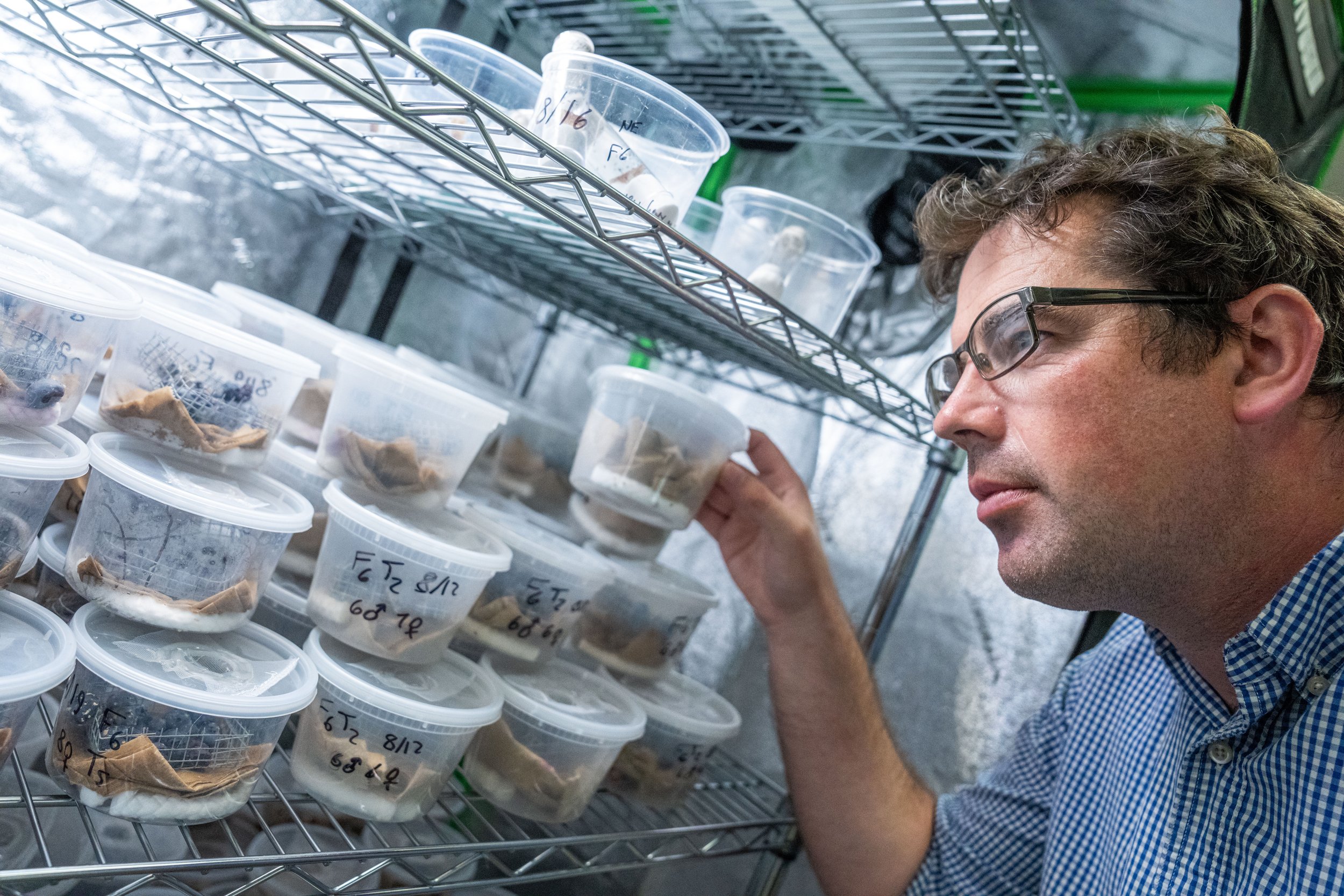
MES Webinar Series: Insects of Maine's Wild Blueberry by Dr. Philip Fanning
Insects of Maine's Wild Blueberry
Maine's wild blueberry is a fascinating and iconic Maine crop with a rich history of entomological research. In this talk, we'll go through some history of that research and the current research into managing pests and beneficial insects in this unique agroecosystem.
Dr. Philip Fanning
is an Assistant Professor of Agricultural Entomology at the University of Maine. Growing up on his family's farm in Tipperary, Ireland, he developed his interest in entomology. At the University of Maine, his research lab focuses on studying the biology and ecology of insects in agroecosystems. This includes examining pests and beneficial insects in wild blueberries.

Maple Syrup and Insect Collecting at Charlene Donahue’s Home
First Field Day of the Season: Whitefield - Saturday, March 25th!
DO PLEASE contact Charlene Donahue if you're planning to attend:
call 485-0960, or by e-mail at donahuecp15@gmail.com
Saturday, March 25: Whitefield (Lincoln County) - Maple Syrup and Insect Collecting at Charlene Donahue’s home. Join us from 10:00 a.m. - 4:00 p.m.
Maple syrup buckets often contain a fascinating assemblage of insects, plus there are insects on tree boles, in the woodpile and tucked in other nooks and crannies this time of year. There is a seep open all winter down near the Sheepscot River at the foot of the slope, and wetlands across the road. Plus, we have a bee yard.
In years past, we've found thousands of springtails atop the snow, and watched stoneflies pop to the surface of the Sheepscot River. You never know what early fauna will show up!
Come visit a backyard sugar operation, enjoy the company and collect a bug or two or maybe more.
Dress for the weather and be sure to wear boots; bring snowshoes if conditions permit, as well as your lunch and drinks. If the sap cooker is running, there are usually people hanging out, and it's a laid-back time (until a batch of syrup is ready to come off!).
DO PLEASE contact Charlene Donahue if you're planning to attend: call 485-0960, or by e-mail at donahuecp15@gmail.com .
Directions are included in the Weekly Forewing, or ask Charlene. Her home address will not be posted on this public website.




